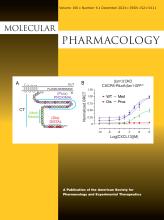Abstract
Our aim was to examine the molecular basis for acute effects of the anthracycline daunorubicin on cardiac ryanodine receptor (RyR2) channels and cardiac calsequestrin (CSQ2). Cardiotoxic effects of anthracyclines preclude their chemotherapeutic use in patients with pre-existing heart conditions. To address this significant problem the mechanisms of anthracycline toxicity must be defined, but at present are poorly understood. RyR2 channel activity was assessed by measuring Ca2+ release from cardiac sarcoplasmic reticulum vesicles and by examining single RyR2 channels inserted into artificial lipid bilayers. We show that 0.5 to 10 μM daunorubicin increases the activity of RyR2 channels after 5 to 10 min and that activity then declines to very low levels when channels are exposed daunorubicin concentrations of ≥2.5 μM for a further 10 to 20 min. Extensive dissection of these effects shows for the first time that the activation results from a redox-independent binding of daunorubicin to the RyR2 complex. Novel data includes the demonstration of daunorubicin binding to RyR2. We provide compelling evidence that RyR2 channel inhibition is due to the oxidation of free SH groups. The oxidation reaction is prevented by the presence of 1 mM dithiothreitol (DTT). We also present novel data showing that CSQ2 modifies the response of RyR2 to daunorubicin, but that the response of RyR2 is not dependent on daunorubicin binding to CSQ2. We suggest that binding of daunorubicin to RyR2 and CSQ2, and oxidation of RyR2, are all likely to contribute to anthracycline-induced cardiotoxicity during chemotherapy
- Ion channel regulation
- Ca imaging
- Receptor binding studies
- Single channel kinetics
- Protein-binding
- Structure/function/mechanism
- Oxidative stress/antioxidants
- Received May 8, 2011.
- Revision received June 20, 2011.
- Accepted June 21, 2011.
- The American Society for Pharmacology and Experimental Therapeutics






